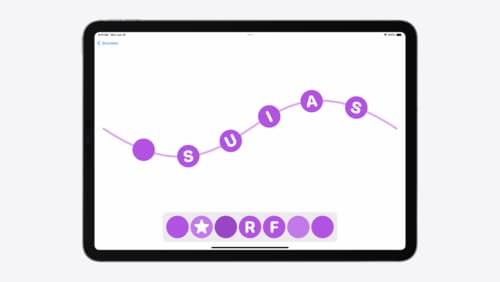Identity swiftui
Asked on 2024-08-28
1 search
SwiftUI is a framework introduced by Apple that allows developers to build user interfaces across all Apple platforms using a declarative Swift syntax. Here are some key characteristics and features of SwiftUI:
-
Declarative Syntax: SwiftUI uses a declarative approach, meaning you describe what the UI should look like and the framework takes care of rendering it. This is different from the imperative approach where you specify how to perform each step to achieve the UI.
-
Compositional: SwiftUI views are compositional, allowing developers to build complex interfaces by combining simpler views. This modular approach helps in organizing code efficiently without compromising performance.
-
State-Driven: SwiftUI automatically updates the UI when the state changes. This reduces boilerplate code and helps in maintaining a consistent UI state. SwiftUI manages the data flow and updates the UI accordingly.
-
Animations and Transitions: SwiftUI provides built-in support for animations and transitions. Developers can wrap state changes with animations to create smooth transitions. Custom animations can also be created using lower-level APIs.
-
Cross-Platform: SwiftUI is designed to work across all Apple platforms, including iOS, macOS, watchOS, and tvOS. This allows developers to write code once and deploy it across multiple devices.
-
Customizability: SwiftUI offers a range of built-in views and controls, but it also allows for deep customization. Developers can create custom controls, layouts, and even apply Metal shaders directly to views.
-
State Management: SwiftUI provides several tools for managing state, including
@State,@Binding, andObservableObject. These tools help in managing data flow and dependencies within the app.
For more detailed insights, you can refer to the session SwiftUI essentials which covers the fundamentals of views in SwiftUI.

Enhance your UI animations and transitions
Explore how to adopt the zoom transition in navigation and presentations to increase the sense of continuity in your app, and learn how to animate UIKit views with SwiftUI animations to make it easier to build animations that feel continuous.

Migrate your TVML app to SwiftUI
SwiftUI helps you build great apps on all Apple platforms and is the preferred toolkit for bringing your content into the living room with tvOS 18. Learn how to use SwiftUI to create familiar layouts and controls from TVMLKit, and get tips and best practices.

SwiftUI essentials
Join us on a tour of SwiftUI, Apple’s declarative user interface framework. Learn essential concepts for building apps in SwiftUI, like views, state variables, and layout. Discover the breadth of APIs for building fully featured experiences and crafting unique custom components. Whether you’re brand new to SwiftUI or an experienced developer, you’ll learn how to take advantage of what SwiftUI has to offer when building great apps.
